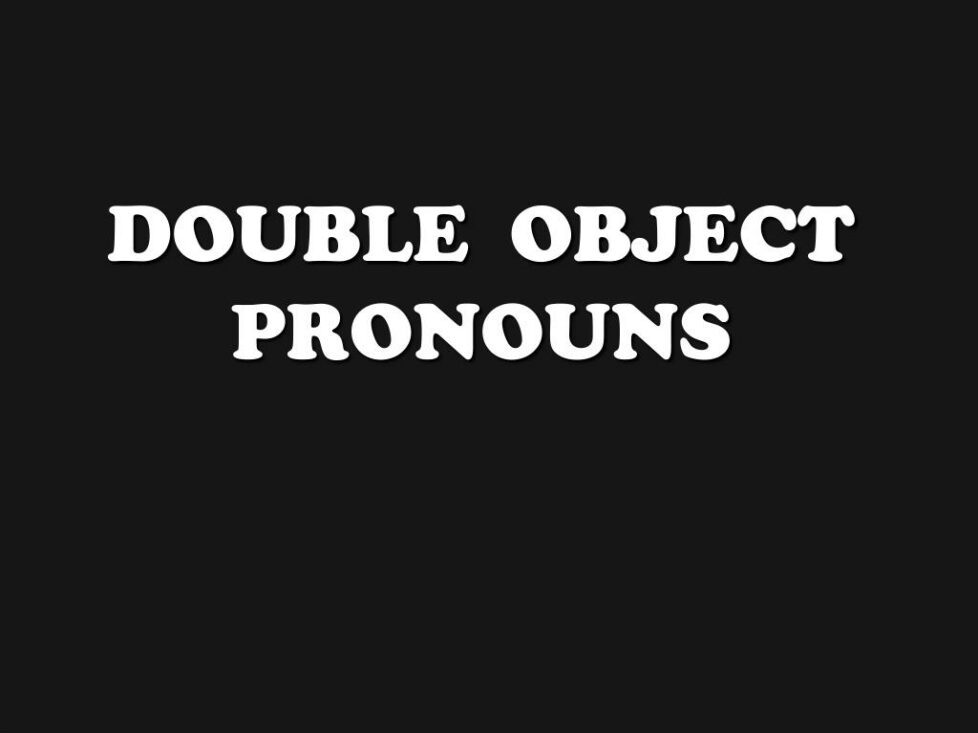Double Object Pronouns

Indirect Object Pronouns
(yo) me
(tú) te
(él) le
(nosotros/nosotras) nos
(ellos/ellas) les
(ustedes) les
Direct Object Pronouns
(yo) me
(tú) te
(él) lo
(Usted masc.) lo
(ella) la
(usted fem.) la
(nosotros/nosotras) nos
(ellos) los
(ellas) las
(ustedes masc.) los
(ustedes fem.) las
Direct and indirect object pronouns can be used together in the same sentence. The indirect object pronoun always precedes the direct object pronoun.
Here are some example sentences:
1. Ella nos da el libro. = She gives us the book.
Ella nos lo da. = She gives us it.
lo = the book/ nos = us
2. Nosotros te servimos la comida. = We serve you the food.
Te la servimos. = We serve it to you.
la = it (the food)/ te you
3. El mesero me muestra el menú. = The waiter shows me the menu.
El mesero me lo muestra. = The waiter shows it to me.
lo = it (the menu)/ me = me
If the indirect object is he, she or them than you use “se” instead of “le” or “les” to avoid having two pronouns together that start with “l”
4. Le escribo una carta a Juan.= I write a letter to Juan.
Se la escribo. = I write it to him.
la= it (the letter) /se = him (Juan)
5. Yo les doy el dinero a Roberto y Sara. = I give the money to Roberto and Sara.
Yo se lo doy = I give it to them.
lo = it (money) /se = them (Roberto and Sara)
If you have a sentence with two verbs, with one of them not conjugated, you can put the indirect and direct object pronouns at the beginning of the sentences or you can stick it on the end of the non conjugated verb. You do this when using the present progressive and the future tense with ir + a + verb (not conjugated).
I am buying you it. (a car) = Te lo estoy comprando. or Estoy comprándotelo.
I want to buy you it (a car). = Quiero comprártelo. or Te lo quiero comprar.
They will send us it (money). = Ellos nos lo van a madar. or Ellos van a mandárnoslo.
